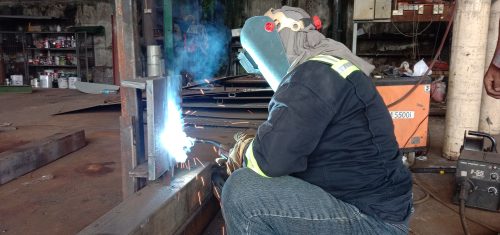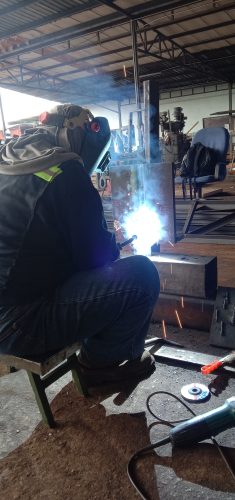
The Welder Qualification Test (WQT) is a critical process in the welding industry designed to assess the skills and proficiency of welders to ensure that they meet specific standards for various welding applications. This comprehensive examination is essential for maintaining the quality, integrity, and safety of welded structures in diverse industries.
Definition and Purpose:
The Welder Qualification Test, also known as the Welder Performance Qualification Test, is a standardized assessment that evaluates a welder’s ability to produce sound welds per specified welding procedures and industry codes. It is a fundamental step in ensuring that welders possess the necessary skills to perform their tasks reliably and consistently. This test is typically required in industries such as construction, manufacturing, aerospace, and energy.
When and Why the Welder Qualification Test is Needed:
The WQT is necessary when a welder is required to work on projects where welding plays a crucial role in structural integrity. It is essential to ensure that the welder can consistently produce welds that meet the specified standards, thereby guaranteeing the safety and reliability of the welded components. The WQT is typically required before a welder is allowed to work on critical projects, and it may also be periodically re-administered to ensure continued competency.
Procedure for Conducting the Welder Qualification Test:
Welding Procedure Specification (WPS): Before the test, a Welding Procedure Specification is developed, outlining the specific parameters for the weld, including materials, welding processes, and techniques.
Test Piece Preparation: A representative test piece, often a coupon or sample joint, is prepared according to the WPS.
Welding Process: The welder performs the required weld on the test piece, following the specified procedures.
Inspection: The completed weld undergoes a thorough inspection, including visual examination and, in some cases, non-destructive testing (NDT) methods.
Documentation: Successful completion of the WQT is documented, and the welder is issued a Welder Qualification Record (WQR).
Can Training Institutes Issue WQT?
In general, a training institute itself does not have the authority to issue an official Welder Qualification Test (WQT) certification. The responsibility for conducting and issuing WQTs typically lies with qualified personnel within the employing company, a certified testing facility, or a recognized certification body by industry standards and codes.
However, training institutes play a crucial role in preparing candidates for the WQT by providing the necessary skills, knowledge, and hands-on experience in welding processes. Training programs often include practical exercises that simulate real-world welding scenarios, helping candidates develop proficiency and confidence.
Proweld Training Centre is one such institution that provides specialized training in welding and prepares candidates for industry-recognized Welder Qualification Tests. In addition to training, Proweld Training Centre also conducts Welder Qualification Tests in accordance with major standards such as AWS D1.1, ASME Section IX, and ISO 9606-1. This enables welders to receive both instruction and certification under one roof. For more information, visit www.weldmart.com.my.
After completing training at an institute like Proweld, candidates can undergo a formal WQT administered by an authorized testing entity. This testing entity may be an in-house certification program within a company, a third-party testing facility, or a certification body accredited to conduct welder qualification tests according to industry standards.

Examples of WQT:
Plate Welding: A common WQT involves welding plates in various positions to assess a welder’s ability to achieve proper penetration, fusion, and overall weld quality.
Pipe Welding: For welders working in industries such as petrochemicals or pipelines, a WQT may involve welding pipes in different positions and using various welding techniques.
Codes and Standards Governing WQT:
Several codes and standards govern the Welder Qualification Test (WQT) to ensure consistency, quality, and safety in welding processes. The selection of specific codes depends on the industry, materials, and type of welding being performed.
AWS D1.1/D1.1M – Structural Welding Code – Steel: Commonly used for welding structural steel components in buildings, bridges, and other steel structures.
AWS D1.5/D1.5M – Bridge Welding Code: Provides specific requirements for bridge-related welding applications.
ASME Section IX – Boiler and Pressure Vessel Code: Widely used in industries involving pressure vessels and boilers.
API 1104 – Welding of Pipelines and Related Facilities: Used in the oil and gas industry for pipeline welding.
ISO 9606 – Qualification Testing of Welders: Fusion Welding: An international standard for the qualification testing of welders for fusion welding of metals.
Advantages of the Welder Qualification Test:
Quality Assurance: Ensures that welders can consistently produce high-quality welds.
Safety: Mitigates the risk of welding-related failures that could lead to accidents or structural failures.
Compliance: Helps companies comply with industry standards and codes.
Limitations of the Welder Qualification Test:
Snapshot Evaluation: The WQT is a point-in-time assessment and may not reflect a welder’s long-term performance.
Limited Scope: The test evaluates specific welding procedures, and success in the test may not guarantee proficiency in all welding applications.
Expiration of WQT:
The WQT does not have a fixed expiration date. However, it is advisable to requalify welders when there are changes in welding procedures, materials, or codes, or when there is an extended period of inactivity.
Issuing Authority for WQT:
The responsibility for issuing the Welder Qualification Test lies with qualified personnel within the company or a certified third-party agency. This ensures impartiality and adherence to industry standards.

Role of Non-Destructive Testing (NDT) in WQT:
NDT methods, such as radiographic testing, ultrasonic testing, and magnetic particle testing, play a crucial role in the WQT by providing additional insights into the quality of welds. These methods help identify defects that may not be visible through visual inspection alone, enhancing the overall assessment of a welder’s competency.
Role of Welding Inspector in WQT:
Welding inspectors are instrumental in overseeing the entire WQT process. They ensure that the test is conducted according to the established procedures, review documentation, and may perform or oversee NDT inspections. The welding inspector plays a key role in upholding the quality and safety standards of the welding operations.
Conclusion:
The Welder Qualification Test is a vital element in the welding industry, ensuring that welders possess the necessary skills to produce reliable and safe welds. Through a standardized process involving careful preparation, welding, inspection, and documentation, the WQT contributes to the overall quality assurance and safety of welded structures. While it has its advantages in maintaining industry standards, it is essential to acknowledge its limitations and periodically reassess welders to adapt to changing conditions and technologies.
Email: infopwtc@gmail.com
Office number: 05-3665621
PIC: En Mohd Hazizul Bin Mohd Hanafiah
Contact number: 019-552 3031
Address: No 3 & 3A, Persiaran Batu Gajah Perdana7, Pusat Komersial Batu Gajah Perdana, 31550 Pusing, Perak.
